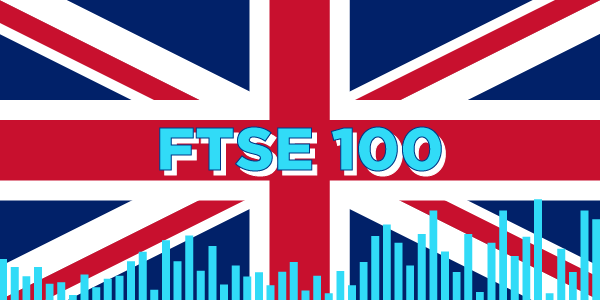FTSE 100 (UK100) INDEX: A GUIDE TO TRADING THE UK100

The FTSE 100 Index, launched on January 3, 1984, with a base value of 1000 points, represents the 100 largest companies listed on the London Stock Exchange (LSE) by market capitalization. Managed by the FTSE Group (trading as FTSE Russell), a subsidiary of the LSE Group, the FTSE 100 is a widely followed benchmark for the UK stock market. However, it may not fully reflect the performance of the UK economy because many of its largest constituents are multinational corporations with a significant portion of their revenues generated overseas. Investors seeking a more accurate representation of the UK economy might consider the FTSE 250 or FTSE SmallCap Index, which include smaller and more domestically focused companies.
Nikkei 225 CFD Trading: Japan 225 Index (JP225)

The Nikkei 225 is a stock market index for the Tokyo Stock Exchange (TSE). It is one of the most widely quoted indices of Japanese equities and includes 225 large, publicly traded companies in Japan. The index is calculated using a price-weighted method, meaning that stocks with higher prices have more influence on the index’s movements, similar to how the Dow Jones Industrial Average works in the U.S.
Euro Stoxx 50 CFD Trading: Eurozone Stocks 50 Index (EU50)

The EU50 index, also known as the Euro Stoxx 50, tracks the performance of 50 of the largest and most liquid blue-chip companies within the Eurozone. It represents major firms from euro-using countries across various sectors, including finance, technology, and healthcare. The index is calculated based on free-float market capitalization, reflecting the total market value of its constituents adjusted for the shares available for trading. Serving as a key benchmark for the Eurozone’s stock market, it provides investors with insights into regional economic performance and investment opportunities.
Understanding of Exotic Pairs and How to Trade Effectively

Exotic currency pairs refer to pairs in the foreign exchange (forex) market that involve one major currency and one currency from an emerging or smaller economy. For example, a pair like USD/TRY (US Dollar/Turkish Lira) or EUR/ZAR (Euro/South African Rand) falls into this category. These pairs are termed “exotic” because they typically involve currencies from countries with less economic stability or lower trading volumes compared to the major currencies like the USD, EUR, JPY, or GBP.
Market Update: Equities Surge Amid Yen Weakness, U.S. CPI Awaited, and Commodity Prices on the Rise

Equity markets continued their upward trajectory, buoyed by a weakening Japanese Yen. The Yen has been under pressure following a dovish tone from Japanese authorities, with the Bank of Japan (BoJ) signaling that it may maintain its current monetary policy stance amid rising global economic uncertainties. This has provided a boost to global equity markets as investors seek higher returns in risk assets. The focus now shifts to the upcoming U.S. Consumer Price Index (CPI) report, which is expected to significantly influence both the equity markets and the U.S. dollar.
Nikkei 225’s Historic Decline: Unpacking the Perfect Storm

The Nikkei 225, Japan’s primary stock index, has experienced a historic selloff, driven by a convergence of multiple factors that have created a “perfect storm.” This sharp decline, marked by a 12.40% drop, is the largest point decline in the index’s history. Key factors contributing to this downturn include the unwinding of carry trades, a stronger yen, rising geopolitical tensions, and a disappointing Non-Farm Payroll (NFP) report. As panic selling ensues, the impact is felt across Asian markets, triggering circuit breakers and heightening global market anxiety.
Daily insights for CFD traders – U.S. Jobs Report Impact

Friday’s soft U.S. jobs report weighed on risk and drove losses in equities and bond yields to end the week. On Wall Street, the Nasdaq closed down by 2.4%, the S&P 500 by 1.8%, and the Dow Jones by 1.5%. U.S. 10-year yields fell 18bps to 3.76%, while crude oil prices dropped by 2.9% to $74.10 a barrel. The AUD/USD traded in a 0.6487/0.6547 range before closing the week at 0.65115.
Daily insights for CFD traders – U.S. Employment Report Looms Large

Yesterday’s gains on Wall Street were short-lived, with the Nasdaq closing down by 2.3%, the S&P 500 falling by 1.8%, and the Dow Jones dropping by 1.2%. U.S. 10-year yields declined by 6bps to 3.97%, while crude oil prices fell 1.3% to $76.90 a barrel. The AUD/USD traded within a 0.64895 to 0.6560 range before settling at 0.6495/00 ahead of the Asian open.
Daily insights for CFD traders – Speculation of September Rate Cut in the US

Overnight, speculation of a September rate cut in the US grew following dovish commentary from Federal Reserve Chairman Jerome Powell. His remarks spurred Wall Street, leading to significant gains with the Nasdaq closing +2.6%, the S&P 500 +1.9%, and the Dow Jones +0.1%. U.S. 10-year yields fell 10bps to 4.04%, while increased tensions in the Middle East drove oil prices 5% higher to $78.40 a barrel.
A Guide to US Dollar vs Japanese Yen (USD/JPY)

The USD/JPY is among the most liquid and widely traded currency pairs globally. Both the Japanese yen and the U.S. dollar are recognized as safe-haven or anti-risk currencies.
According to the International Monetary Fund, these two currencies together represent 66% of the world’s official foreign exchange reserves. This underscores the importance for traders to stay informed about developments related to both currencies.
Daily insights for CFD traders – FOMC Rate Decision

Overnight, technology stocks dragged on Wall Street, leading to a mixed performance among major indices. The Nasdaq closed down by 1.3%, the S&P 500 fell by 0.8%, while the Dow Jones managed a positive close, up by 0.5%. U.S. 10-year yields dipped by 3bps ahead of the FOMC decision, while crude oil prices dropped by 0.7%, settling at $75.3 a barrel.
Daily Insights for CFD Traders – U.S. Market Stability and Global Economic Data

In a subdued start to the week, U.S. equity indices remained largely flat. U.S. 10-year yields fell slightly by 2bps to 4.17%, and crude oil saw a decline of 1.7%, closing at $75.90 a barrel. The AUD/USD traded within a narrow range of 0.6524 to 0.6568 before settling around 0.6545/50.
